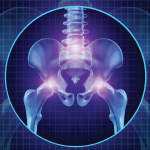“They are often young people, highly motivated and high achievers, who have been cut down in their prime,” Dr. Grahame noted. “And often they’re told—because doctors don’t understand what’s going on—that they’re imagining their pain, or that it’s all in their minds. This is a terrible indictment of how we handle these patients.” He argued that JHS warrants a new moniker, and has nicknamed the syndrome “the new rheumatological disability.”
Therapy Principles for Adults
Clinical management of hypermobility syndrome has expanded in parallel with its broadened classification criteria, said Rosemary J. Keer, MSc, a physiotherapist at the Central London Physiotherapy Clinic and coauthor with Dr. Grahame of Hypermobility Syndrome: Diagnosis and Management for Physiotherapists (Butterworth/Heinemann). During the initial examination, clinicians should assess patients for pain; clicking and popping in the joints; subluxations or frank dislocations; paresthesias; and other symptoms—such as fatigue, malaise, or flu-like symptoms—that could be indicative of autonomic nervous system involvement or deconditioning. Physical therapists address joint instability through specific, targeted, and progressive muscle training exercises. The idea is to head off additional injuries and prevent deconditioning, which is often a result of pain and being told (wrongly) by other clinicians to rest instead of move.
The goal in her clinic is to increase function despite pain, and Keer emphasized that to achieve this goal, physiotherapists must actively engage their patients in the process. Often, she explained, the team first works with patients to teach correct breathing and relaxation techniques to prepare for the early, mid, and late phases of treatment. Rehabilitation focuses on restoring a range of motion that is normal for each patient, helping the patient gain control of hypermobile areas, and improving joint proprioception. Exercises begin with establishing trunk stability and teaching appropriate recruitment of pelvic floor and transverse abdominus muscles. Exercises progress from static to weight bearing, and functional activities are encouraged as patients improve.
Clear communication and patient education are crucial. “Often, patients come to clinic with low self-efficacy, because they’ve tried lots of different things before and their condition has only gotten worse,” said Keer. “Part of our work is to address the barriers which are preventing them from going forward, and enable patients to effectively self-manage.” Exercise programs are cognitive based—that is, their “brains are involved,” and exercises are not performed in accompaniment to music or other mental distractions, Keer explained. Recent work at her clinic has shown that motor imagery improves motor and task performance, a result of neural adaptation. Finally, therapists help patients learn the distinction between training pain, which they are encouraged to expect, and exacerbation of symptoms. Pain issues are addressed with specific pain management techniques.
We are trying to help children with hypermobility to be as strong and as fit as possible. … And we think that children can strengthen beyond levels that we thought possible.
—Susan M. Maillard, MSc


